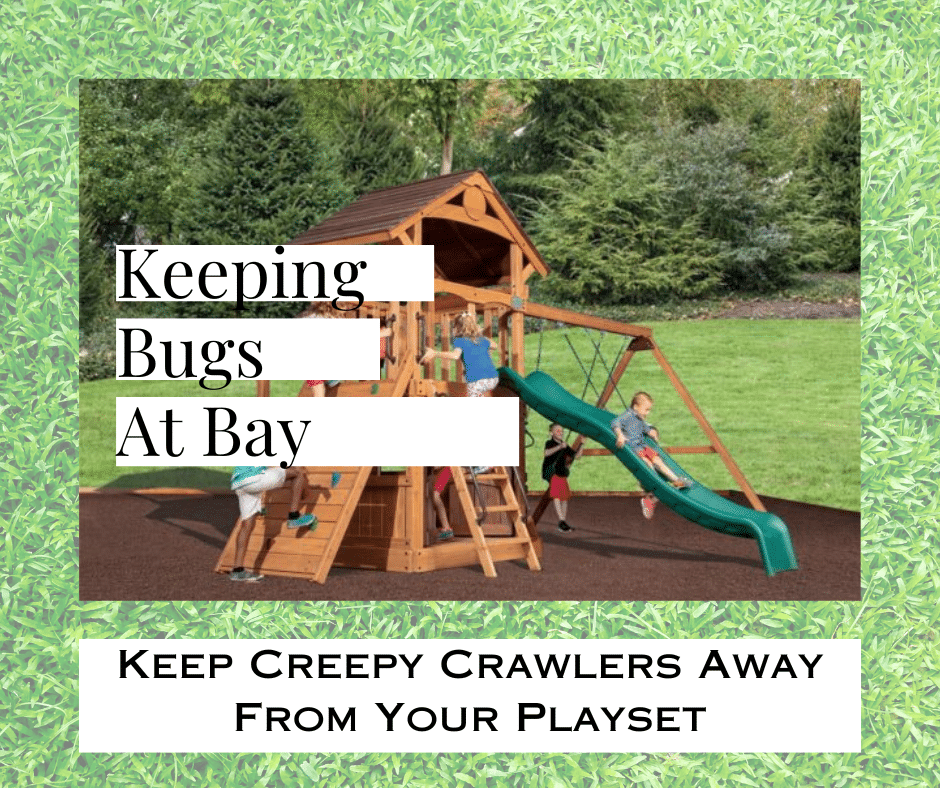When it comes to enjoying the great outdoors, a wooden playset can provide endless hours of fun and adventure for children. However, one potential drawback of these structures is their vulnerability to insect infestations. Insects are a common concern in Austin, TX, with certain species posing a threat to the structural integrity of wooden playsets. Fortunately, there are proactive steps you can take to prevent insects from nesting on your playset and ensure its longevity. In this blog post, we will explore some effective strategies for keeping those unwanted six-legged guests away.
Identifying Common Insects in Austin, TX:
Before we dive into prevention methods, it’s essential to familiarize ourselves with the insects commonly found in the Austin area. Some of the insects that can pose a risk to your wooden playset include:
Carpenter Bees: Large and solitary bees that bore into wood to build their nests, causing structural damage.
Termites: Destructive insects that feed on cellulose, which is abundant in wooden structures, potentially compromising their stability.
Ants: Certain ant species, such as carpenter ants, can excavate galleries in wood, leading to weakened playset components.
Wasps and Hornets: These stinging insects may build nests in small openings and crevices on wooden playsets, posing a safety hazard for children.
Prevention Strategies:
Regular Cleaning and Maintenance:
Keeping your playset clean and well-maintained is the first line of defense against insect infestations. Regularly remove debris, fallen leaves, and organic matter from the playset. This reduces potential nesting sites and discourages insects from settling in. Pay extra attention to hidden or hard-to-reach areas where insects might seek refuge.
Reduce Moisture Levels:
Insects are often attracted to moisture, so minimizing dampness around your playset is crucial. Ensure proper drainage to prevent water accumulation near the structure. Regularly inspect and repair any leaks or water-related issues, as damp wood is more susceptible to insect damage.
Trim Vegetation:
Overhanging branches and dense vegetation near the playset can act as bridges for insects to reach the wooden surfaces. Trim trees and shrubs, creating a buffer zone between the plants and the playset. This helps minimize direct contact between the insects’ habitats and the structure.
Natural Insect Repellents:
Consider using natural insect repellents as an additional measure to deter pests. Certain plants, such as lavender, marigold, and citronella, have insect-repellent properties and can be strategically placed around the playset. However, it’s essential to research local plant species and their compatibility with the Austin climate.
Regular Inspections:
Frequent inspections of your playset are essential to catch any signs of insect activity early. Look for small holes, sawdust-like frass, or the presence of wings near the wood. If you suspect an infestation, contact a pest control professional to assess the situation and provide appropriate treatment options.
Protecting your wooden playset from insect infestations is a crucial step in maintaining its durability and safety. By implementing the preventive measures discussed in this blog, such as regular cleaning, sealing the wood, reducing moisture, trimming vegetation, using natural repellents, and conducting routine inspections, you can minimize the risk of insect nesting and damage. Remember, early detection and prompt action are key to preventing extensive harm to your playset and ensuring it remains a source of joy and entertainment for years to come.

